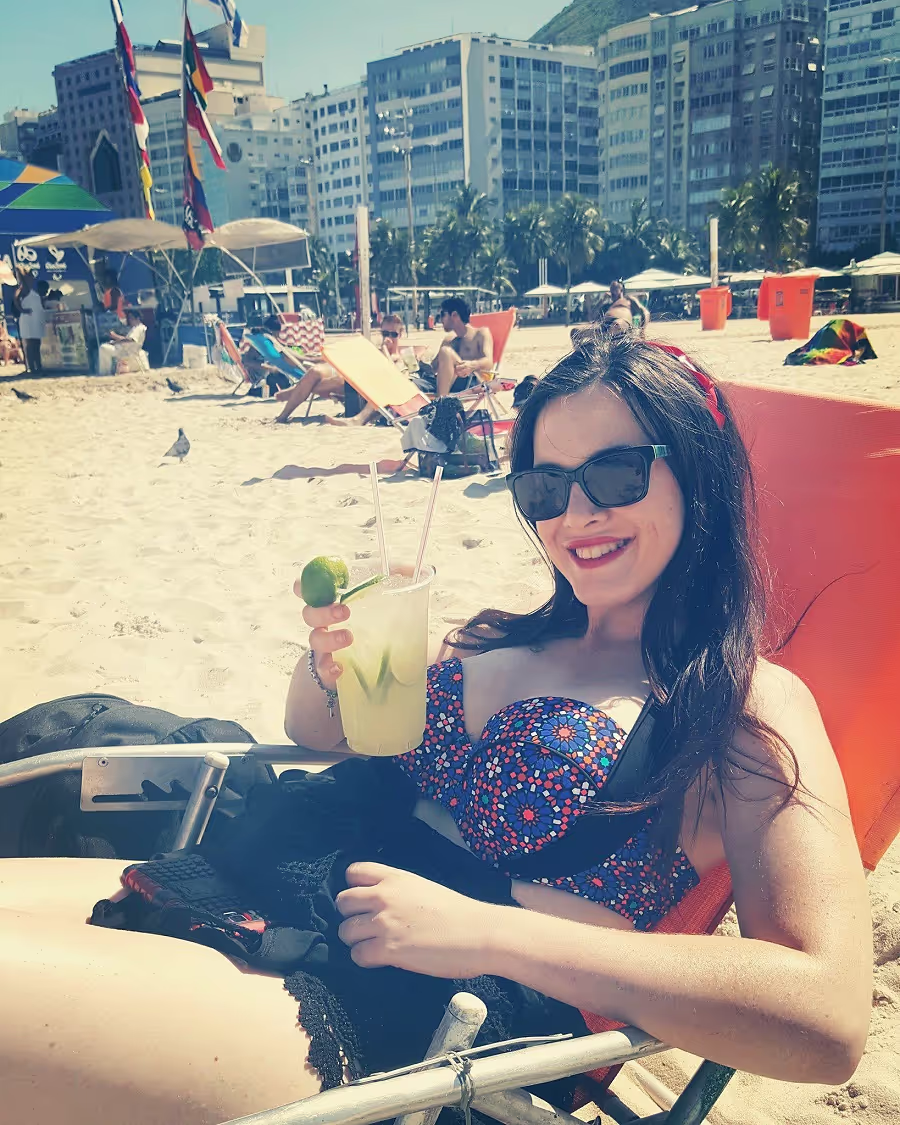Diabetes And The Beach: Tips For Management
It’s SUMMER! Well, at least it feels like it here in the UK with temperatures reaching a whopping 30 degrees. (Impressive right?). So, what’s the one thing we love to do when the temperature is good?
Head to the beach of course! However, diabetes and the beach might not be as straightforward as your non-diabetic buddy, but that certainly doesn’t mean you should avoid it, or stop having an awesome time.

So check out my little guide to diabetes and the beach: Tips for management!
Challenges at the beach with type 1 diabetes
I do love the beach, but I prefer quieter beaches but I can take pictures with no one in the background! When heading to the beach with diabetes, there are some things we need to consider beforehand as there are certain challenges ahead. I will go through some of the ones I commonly deal with below.

Hot Weather and Blood Sugar
We all know the hot weather can lower your blood sugars, so naturally it’s time to take some precautions. Firstly make sure you have lots of hypo supplies with you. Bring a little freezer bag and pack a picnic (because who doesn’t love a beach picnic!) with some fruit or sugary drinks.
If you are on insulin pens: it’s a good idea to reduce your background insulin (long-lasting) by around 10%, some children who are really sensitive or insulin or the sun may need further reductions, but if you are at the beach for a few days, then reduce slowly as this will give you a chance to catch hypos and find an insulin dose that suits. Slow and steady wins the race.
With your short-acting insulin, it’s also a good idea to reduce your bolus when you are giving insulin for food. Again, I always suggest 10% and work from there.
If you are on an insulin pump: You can make use of the temporary basal rate function that are on insulin pumps. This means you can reduce your insulin by a certain percentage for a period of time. I would usually reduce mine by 20%, but I would always recommend 10% if you’ve never used a TBR before, or give your doctor a call or text if they are available for a suggestion.
Again, when you are eating, reduce your amount of bolus.
Activities in the sun

So, we’ve already had to reduce our insulin because we are simply in the sun, but if we are swimming, surfing, playing beach volleyball or doing any type of physical activity in the sun then you will probably need to reduce your insulin further. I’ve got a whole guide on surfing from a great t1d surfer that you can check out here. But if you are doing any activity, especially for children, then I’d be reducing by around 40-50%.
I would always suggest recording down or adding a note to your mobile blood tracking apps (or on your insulin pump) about the amount of insulin you have reduced by for the specific activity, and then when you repeat that experience in the future, you have an idea of what exactly you need to do to avoid highs and lows. This will make diabetes and the beach a doodle in the future!
Should I switch from insulin pump to pen?
Beach days are a valid reason that people decide to make a short term switch from their insulin pump to pens. This is because if you want to go in and out of the water swimming, or just generally running about, some people find it is easier without an insulin pump. Below I discuss how to do a short-term switch!
In this case, you will need to give your fast-acting insulin every 3 to 4 hours. Depending on the life of your insulin. So, if you find you are at the beach from 9 to 3, then don’t give yourself any long-lasting insulin as these tend to last 24 hours so you will need to wait until it’s out of your system before you could switch to your insulin pump without taking a hypo. So to conclude:
- Basal insulin every 3 to 4 hours (this is like correction doses- if you need them)
- A pre-meal bolus of carbs (every time you eat)
- Test regularly
Then once you are finished at the beach, you can pop your insulin pump back on. You just need to ensure that your last bolus of fast acting insulin has left your body, which will be around 3-4 hours.
Keeping insulin and equipment cold
The heat can also wreak havoc on our actual insulin and our diabetes equipment. If you want to keep your insulin cool with you whilst at the beach, then my biggest suggestion is a Frio bag. They’ve got a whole new lifestyle range that looks amazing and will match any beach outfits!

Pop your insulin in your frio bag and pop it in the picnic basket (seriously, beach picnics are the best!). If you don’t want to opt for Frio, then you can check out other insulin travel cases here. However, you do get a 20% discount with Frio with the purchase of our new eBook, so why wouldn’t you go for them!
Another good idea is to invest in a MedAngel One sensor, this is a sensor you can pop into your frio bag to measure the temperature and it alert you via an app on your phone whether your insulin is getting too hot. This is PERFECT for beach days and ensuring you don't waste any precious insulin. The eBook contains an exclusive discount for the MedAngel, and you can find out even more about it here.
If you want to keep your equipment cool then I’d simply be keeping it in the shade in a little case. Myabetic do great bags for keeping your supplies in one place, or even My Sugar Case (who you also get an exclusive discount with). This can keep everything organised, and just don’t leave them in direct sunlight.

Your other alternative is to simply bring a freezer bag for the day, and put your insulin and equipment in there. Up to you! It depends on how often you are beaching it.
CGM's at the beach
If you have Dexcom, The Freestyle Libre, or even the Medtronic Enlite CGM, these are really useful for catching patterns at the beach or in the sunshine in general. It can help make the process a little easier, however there can be issues with keeping them waterproof. But, you can get "rock" tape and other covers for your CGMs and they are discounted with our eBook!

So there you have it, these are the most common things I deal with when I am at the beach. If I am on holiday at the beach, then I sometimes enjoying alcohol in the sunshine, which will drag blood sugars down too, so you need to be super careful. But, I’ve done a full guide on managing alcohol and diabetes and I think there is some great tips in there that you can use too!
I hope you’ve find this guide on diabetes and the beach useful and if you’ve got any more tips then pop them below!
Don’t forget that you can get our brand new eBook and online digital course today! It includes 14 bonus resources, $200 dollars worth of savings with Frio, MysugarCase and many more, AND a free diabetic ID when you purchase a combo deal. (they’re really pretty!). Find out more here.



Leave a comment
Let us know what you think!